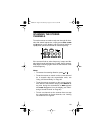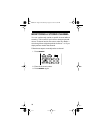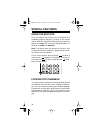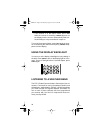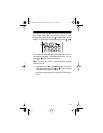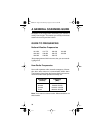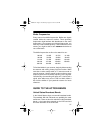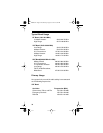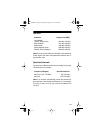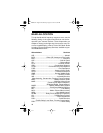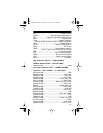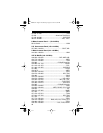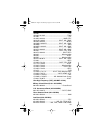
37
Birdie Frequencies
Every scanner has birdie frequencies. Birdies are signals
created inside the scanner’s receiver. These operating
frequencies might interfere with broadcasts on the same
frequencies. If you program one of these frequencies, you
hear only noise on that frequency. If the interference is not
severe, you might be able to turn
SQUELCH
clockwise to
cut out the birdie.
The birdie frequencies on this unit to watch for are:
To find the birdies in your scanner, begin by disconnecting
the antenna and moving it away from the receiver. Make
sure that no other nearby radio or TV sets are turned on
near the scanner. Use the search function and scan every
frequency band from its lowest frequency to the highest.
Occasionally, the searching will stop as if it had found a
signal, often without any sound. That is a birdie. Make a
list of all the birdies in your particular scanner for future
reference.
GUIDE TO THE ACTION BANDS
United States Broadcast Bands
In the United States, there are several broadcast bands.
The standard AM and FM bands are probably the most
well known. There are also four television audio broadcast
bands — the lower three transmit on the VHF band and
the fourth transmits on the UHF band.
29.900 30.455 30.735 31.480
32.090 32.530 33.580 38.400
51.200 51.225 140.800 143.430
144.000 147.200 153.600 156.800
160.000 162.200 166.400
20-310.fm Page 37 Wednesday, August 4, 1999 10:49 AM



